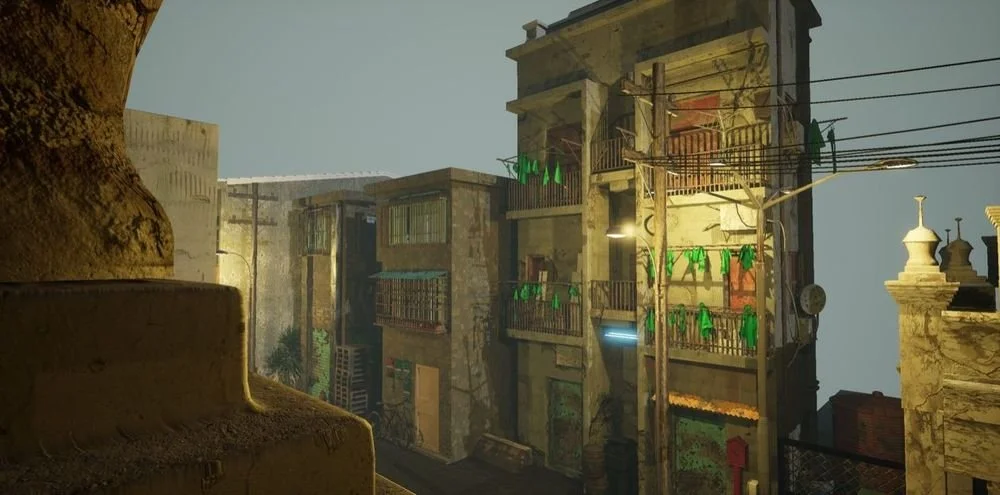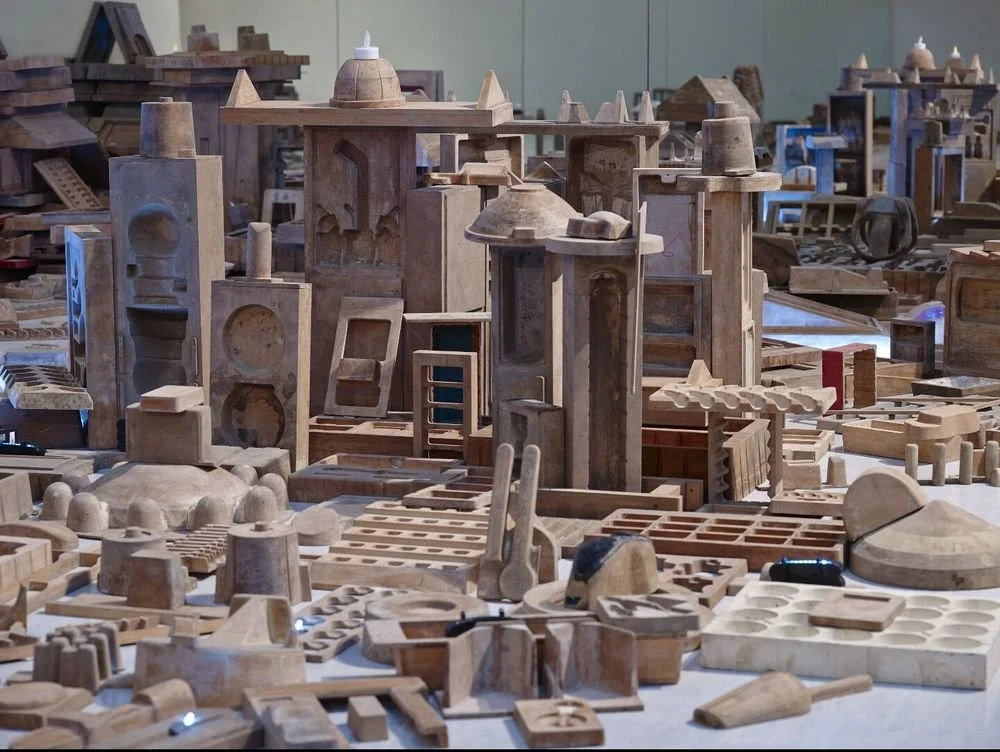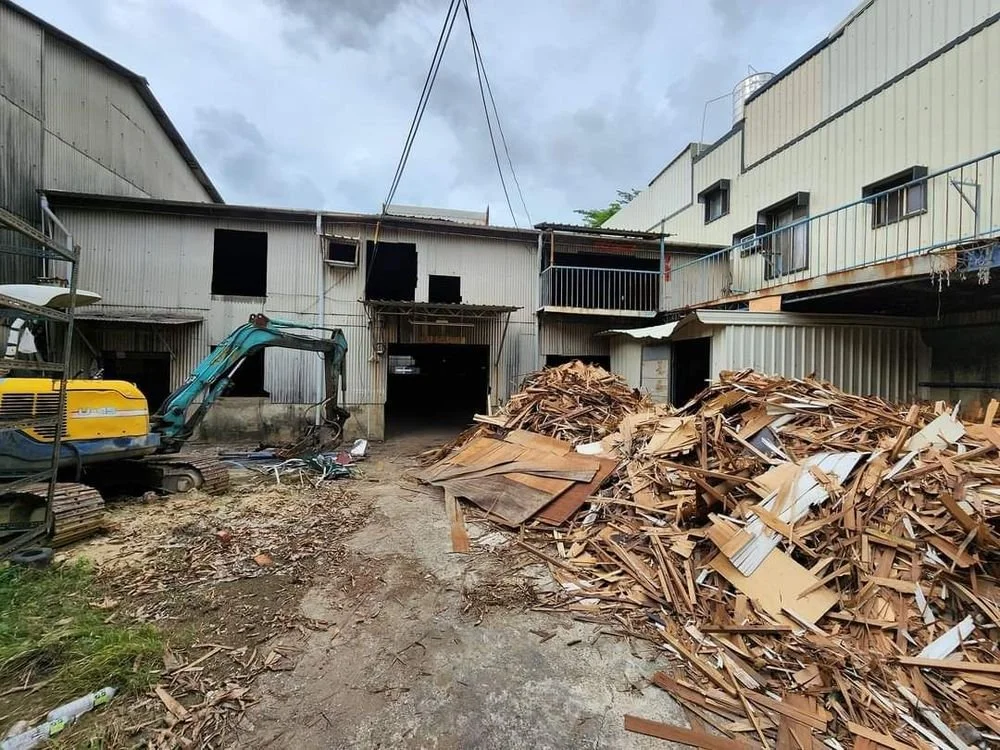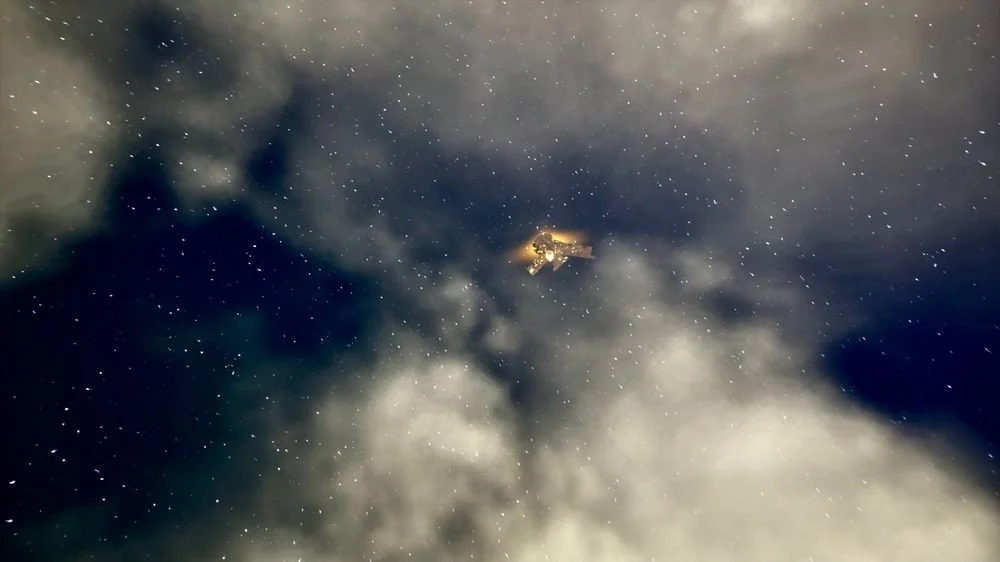VR Experience: City of Apparition at The Hudson Eye
By Cansu Peker
Curating an exhibition for The Hudson Eye has been a dream — and little did I know it would also connect me with brilliant artists in the area and beyond. One of them is Wayne Ashley. I’ve been a fan of his extended reality work for a while, and we actually connected almost exactly a year ago. At the time, we were both excited about doing an interview for the blog… and then life happened, as it usually does.
Fast forward to this summer: Wayne and I ended up sharing a space during the festival. While I was installing Blink Twice by the windows, he was setting up City of Apparition in the back room. Perks of sharing a space — or maybe of being a publisher — I got a private viewing of City of Apparition and the chance to pepper Wayne with all my questions after experiencing this powerful work.
“When my home was destroyed, I was shocked beyond words. The once-safe haven I had always believed ‘home’ to be, since childhood, revealed its fragility, susceptible to any change. Standing on the balcony one day, I realized the entire city was an illusionary, fickle organism, in a constant state of floating.”
City of Apparition is FuturePerfect’s new mixed reality experience, created in collaboration with visual artist Lin Shu-Kai. Building on a decade of immersive storytelling research and Lin’s fully analog world-building and puppeteering practice, the project merges installation and visual art with game engines and interactive technologies.
The work is a response to un-homing — the profound dislocation that occurs when people are uprooted from both their physical environment and their cultural or psychological sense of place. It’s a trauma that severs the bond between people and where they belong.
But rather than presenting this as a straightforward documentary, City of Apparition transports audiences into a fantastical and spiritual journey. It draws on science fiction, history, speculative futures, and fantasy. It’s a hybrid of experiential design, theater, and cutting-edge storytelling, blurring physical and digital worlds into one.
Here’s the synopsis: Amid the chaos of urban upheaval and the devastating loss of his home, Mr. Yang-Tai (陽台先生), an office worker, begins to question the monotony of his daily routine. Grappling with the haunting question, “Is this all there is to my life?” he escapes to a parallel universe, transforming into a fearless intergalactic traveler. Venturing aboard a space capsule of his own imagination, Yang-Tai embarks on a journey that’s sometimes a dream voyage to the future, sometimes a science fiction odyssey, sometimes a mythical return to the past — and always a quest to find home.
He explores the far corners of the universe — from the celestial metropolis of Manjusaka (曼珠沙華), to the weathered industrial landscapes of Hua-Chin City (華慶之都), to the abandoned underwater multiverse of Vidunas (維度娜斯). At every turn, he faces the same fundamental question: How do I return home when it no longer exists?
Equipped with AR headsets, audience members move through a hybrid environment where the narrative unfolds across three layers: the fictive digital space, the actual physical venue, and a constructed artistic world of objects, sound, and light. What we saw at The Hudson Eye was just the beginning — the first iteration of a project that will continue evolving through 2027.
Talking with Wayne afterward, I could tell how much creativity drives this collaboration. For example, he doesn’t speak Mandarin and Lin doesn’t speak English. While they sometimes rely on translators, they also embrace misinterpretation as a creative opportunity. That openness says a lot: their process is fluid, willing to be surprised both by each other and by how the work unfolds with audiences.
And audiences really are part of the artwork. Interactivity plays a massive role. You can pick up virtual building blocks to assemble your own spaceship — like Legos, if they defied physics. It honestly felt like magic, holding a virtual piece between my fingers and snapping it into place. At one point, I tossed a block and watched it fly into virtual space. There’s an unspoken invitation to get creative with how you interact with the work.
The creators also added subtle visual cues to guide you. At one point, a flock of birds flew across the virtual city, encouraging me to follow and circle around, experiencing the 3D environment from every angle rather than just standing still.
Once you put on the headset, you see both the real space around you and its digital overlay. And midway into the story, the city suddenly collapses. Smoke and debris engulf you — I actually had the urge to step back, almost covering my nose. Then the VR fully takes over, and you’re immersed in ruins before launching your spaceship into vast space, where you can start building again. Sketches of possible new futures fly around you. Out of destruction comes the chance to create. Anything is possible.
It reminded me of Christchurch, New Zealand, after the devastating earthquakes in 2010 and 2011. Huge parts of the city, especially the central business district, were destroyed. Because so much had to be rebuilt, there was this feeling of “starting over.” The government and local groups invited residents to help imagine what the new Christchurch could look like. One of the most famous efforts was Share an Idea, a massive public project where people (including school kids) submitted over 100,000 ideas — everything from green spaces to cultural hubs. Not every idea was used, but it gave the community a voice in shaping the city’s future.
That’s the dichotomy I felt here: un-homing can mean devastation and disorientation, but it can also mean possibility. If home is gone, maybe we can imagine what home could be now.
And this is just the start. The larger-scale exhibition opens in Taiwan this September, where audiences will move through both the physical and digital installations at once. Wayne mentioned there will even be puppets in the space — which he called “grandfathers of avatars.” I love that idea: connecting past and present, demystifying digital worlds. They aren’t so alien after all.
City of Apparition unfolds like a “visual poem,” a phrase Wayne used that really stuck with me. It invites big reflections on belonging, safety, and what happens when “home” no longer feels certain. But it also gifts you with the tools to imagine, play, and literally build something new — right there in the headset. That mix of wonder, reflection, and possibility is what makes this experience unforgettable, and I can’t wait to see how it evolves when it opens in Taiwan next month.
And yes — stay tuned, because my long-overdue interview with Wayne is coming soon… for real this time!
More about the project: City of Apparition
Read next:
VR Experience: Horizon of Khufu
VR Experience: Tonight with the Impressionists, Paris 1874
Immersive Art Experience: Mercer Labs
Immersive Art Experience: INTER_




















